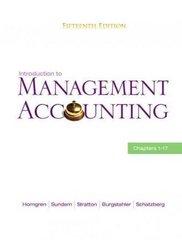Question
. Use the chart to identify the correct risk classification for each statement presented in the chart. In the appropriate column, use the first letter
. Use the chart to identify the correct risk classification for each statement presented in the chart. In the appropriate column, use the first letter of the classification to indicate the type of risk. For the quadrants of risk, use the first letter of the risk quadrant (H=hazard, O=operational, F=financial, and S=strategic). For example, for the statement "A chance of loss or no loss, but no chance of gain," you would identify the risk as "Pure and Speculative" and then enter a "P" to indicate that it was "pure risk."
Answer:
| American Institute for Chartered Property Casualty Underwriters | Answers | |||
Questions | Pure and Speculative | Subjective and Objective | Diversifiable and Nondiversifiable | Quadrants |
This type of risk may be quite different from the actual underlying risk that is present. | ||||
Although a credit risk is particularly significant for banks and other financial institutions, it can be relevant to any organization with accounts receivable. | ||||
These risks arise from trends in the economy and society, including changes in the economic, political, and competitive environments, as well as from demographic shifts. | ||||
The perceived amount of risk based on an individual's or organization's opinion. | ||||
This risk is not highly correlated and can be managed through diversification, or spread, of risk. | ||||
These risks fall outside the hazard risk category and arise from people or a failure in processes, systems, or controls, including those involving information technology. | ||||
This risk is correlatedthat is, gains or losses tend to occur simultaneously rather than randomly. | ||||
A chance of loss or no loss, but no chance of gain. | ||||
Systemic risk is the potential for a major disruption in the function of an entire market or financial system. | ||||
Uncertainty over the size of cash flows resulting from possible changes in the cost of raw materials and other inputs (such as lumber, gas, or electricity), as well as cost-related changes in the market for completed products and other outputs. | ||||
This risk arises from property, liability, or personnel loss exposures and is generally the subject of insurance. | ||||
A chance of loss, no loss, or gain. | ||||
These risks arise from the effect of market forces on financial assets or liabilities and include market risk, credit risk, liquidity risk, and price risk. | ||||
The measurable variation in uncertain outcomes based on facts and data. |
Step by Step Solution
There are 3 Steps involved in it
Step: 1

Get Instant Access to Expert-Tailored Solutions
See step-by-step solutions with expert insights and AI powered tools for academic success
Step: 2

Step: 3

Ace Your Homework with AI
Get the answers you need in no time with our AI-driven, step-by-step assistance
Get Started


